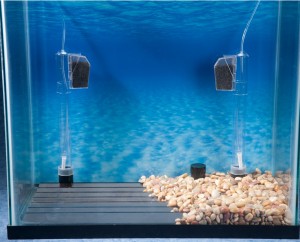
The quality of carbon is typically measured by ash content, iodine number, and molasses number. It is important to have a carbon material with a good mixture of both large and small pores to catch pollutants. If the surface has many tiny pores (micro-porous carbon) then the pores will not be large enough to let pollutants to enter them. On the other hand, if the total surface area contains mostly large pores (macro-porous carbon) then there will not be very many chemical bonding sites. >
Quality of the carbon
Make sure you buy quality activated carbon. Cheap carbon often contains a great deal of ash, and will become deactivated (meaning that it stops removing compounds) very quickly. Another important thing is if you use carbon with a lot of ashes in water, these ashes will start floating and make it look dirty.
When it comes to freshwater aquarium filtration, there are many options to choose from. One of the most popular filtration methods involves activated carbon filter media. Yet, using carbon in a freshwater aquarium is a controversial subject. Some people believe it is a waste of time and never use carbon except for special occasions. Others use a great deal of carbon and hope to polish the water and remove odours.
As a fish lover, I always do the best to keep my tank as clean as possible. I tried both ways, with or without activated carbon. After failures and trails, I can say if use properly, carbondoes polish the water and remove odours effectively. Sure, you may continue to insist the anti-carbon point of view,butif you decide to use carbon, there are several things you need to know in order to achieve the optimal aquarium.
Read next for more tips to perfect your aquarium setup.
